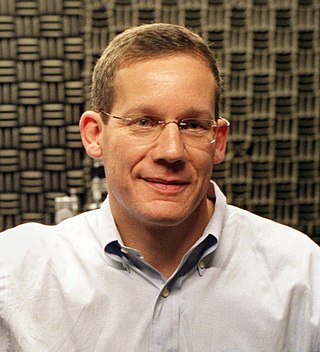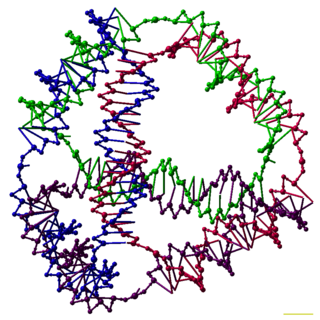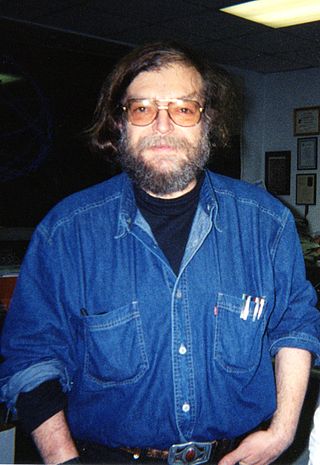
The Foresight Institute (Foresight) is a San Francisco-based research non-profit that promotes the development of nanotechnology and other emerging technologies, such as safe AGI, biotech and longevity.

Nanotechnology, often shortened to nanotech, is the use of matter on atomic, molecular, and supramolecular scales for industrial purposes. The earliest, widespread description of nanotechnology referred to the particular technological goal of precisely manipulating atoms and molecules for fabrication of macroscale products, also now referred to as molecular nanotechnology. A more generalized description of nanotechnology was subsequently established by the National Nanotechnology Initiative, which defined nanotechnology as the manipulation of matter with at least one dimension sized from 1 to 100 nanometers (nm). This definition reflects the fact that quantum mechanical effects are important at this quantum-realm scale, and so the definition shifted from a particular technological goal to a research category inclusive of all types of research and technologies that deal with the special properties of matter which occur below the given size threshold. It is therefore common to see the plural form "nanotechnologies" as well as "nanoscale technologies" to refer to the broad range of research and applications whose common trait is size.

DNA computing is an emerging branch of unconventional computing which uses DNA, biochemistry, and molecular biology hardware, instead of the traditional electronic computing. Research and development in this area concerns theory, experiments, and applications of DNA computing. Although the field originally started with the demonstration of a computing application by Len Adleman in 1994, it has now been expanded to several other avenues such as the development of storage technologies, nanoscale imaging modalities, synthetic controllers and reaction networks, etc.

Nanotechnology education involves a multidisciplinary natural science education with courses such as physics, chemistry, mathematics, and molecular biology. It is being offered by many universities around the world. The first program involving nanotechnology was offered by the University of Toronto's Engineering Science program, where nanotechnology could be taken as an option.

Armand Paul Alivisatos is an American chemist and academic administrator who has served as the 14th president of the University of Chicago since September 2021. He is a pioneer in nanomaterials development and an authority on the fabrication of nanocrystals and their use in biomedical and renewable energy applications. He was ranked fifth among the world's top 100 chemists for the period 2000–2010 in the list released by Thomson Reuters.
Paul Wilhelm Karl Rothemund is a research professor at the Computation and Neural Systems department at Caltech. He has become known in the fields of DNA nanotechnology and synthetic biology for his pioneering work with DNA origami. He shared both categories of the 2006 Feynman Prize in Nanotechnology with Erik Winfree for their work in creating DNA nanotubes, algorithmic molecular self-assembly of DNA tile structures, and their theoretical work on DNA computing. Rothemund is also a 2007 recipient of the MacArthur Fellowship.

Charles M. Lieber is an American chemist, a pioneer in nanoscience and nanotechnology, and a convicted felon. In 2011, Lieber was named the leading chemist in the world for the decade 2000–2010 by Thomson Reuters, based on the impact of his scientific publications. He is known for his contributions to the synthesis, assembly and characterization of nanoscale materials and nanodevices, the application of nanoelectronic devices in biology, and as a mentor to numerous leaders in nanoscience.
The history of nanotechnology traces the development of the concepts and experimental work falling under the broad category of nanotechnology. Although nanotechnology is a relatively recent development in scientific research, the development of its central concepts happened over a longer period of time. The emergence of nanotechnology in the 1980s was caused by the convergence of experimental advances such as the invention of the scanning tunneling microscope in 1981 and the discovery of fullerenes in 1985, with the elucidation and popularization of a conceptual framework for the goals of nanotechnology beginning with the 1986 publication of the book Engines of Creation. The field was subject to growing public awareness and controversy in the early 2000s, with prominent debates about both its potential implications as well as the feasibility of the applications envisioned by advocates of molecular nanotechnology, and with governments moving to promote and fund research into nanotechnology. The early 2000s also saw the beginnings of commercial applications of nanotechnology, although these were limited to bulk applications of nanomaterials rather than the transformative applications envisioned by the field.
The Feynman Prize in Nanotechnology is an award given by the Foresight Institute for significant advances in nanotechnology. Two prizes are awarded annually, in the categories of experimental and theoretical work. There is also a separate challenge award for making a nanoscale robotic arm and 8-bit adder.
The following outline is provided as an overview of and topical guide to nanotechnology:
Amanda Susan Barnard is an Australian theoretical physicist working in predicting the real world behavior of nanoparticles using analytical models and supercomputer simulations and applied machine learning. Barnard is a pioneer in the thermodynamic cartography of nanomaterials, creating nanoscale phase diagrams relevant to different environmental conditions, and relating these to structure/property maps. Her current research involves developing and applying statistical methods and machine/deep learning in nanoscience and nanotechnology, and materials and molecular informatics. In 2014 she became the first person in the southern hemisphere, and the first woman, to win the Feynman Prize in Nanotechnology, which she won for her work on diamond nanoparticles.

Grzegorz Rozenberg is a Polish and Dutch computer scientist.

DNA nanotechnology is the design and manufacture of artificial nucleic acid structures for technological uses. In this field, nucleic acids are used as non-biological engineering materials for nanotechnology rather than as the carriers of genetic information in living cells. Researchers in the field have created static structures such as two- and three-dimensional crystal lattices, nanotubes, polyhedra, and arbitrary shapes, and functional devices such as molecular machines and DNA computers. The field is beginning to be used as a tool to solve basic science problems in structural biology and biophysics, including applications in X-ray crystallography and nuclear magnetic resonance spectroscopy of proteins to determine structures. Potential applications in molecular scale electronics and nanomedicine are also being investigated.
Erik Winfree is an American applied computer scientist, bioengineer, and professor at California Institute of Technology. He is a leading researcher into DNA computing and DNA nanotechnology.

Nadrian C. "Ned" Seeman was an American nanotechnologist and crystallographer known for inventing the field of DNA nanotechnology.
Friedrich C. Simmel is a German biophysicist and professor at the Technical University Munich. He is a researcher in the field of DNA nanotechnology and is best known for his work on DNA nanomachines and dynamic DNA-based systems.

Robert Dirks was an American chemist known for his theoretical and experimental work in DNA nanotechnology. Born in Thailand to a Thai Chinese mother and American father, he moved to Spokane, Washington at a young age. Dirks was the first graduate student in Niles Pierce's research group at the California Institute of Technology, where his dissertation work was on algorithms and computational tools to analyze nucleic acid thermodynamics and predict their structure. He also performed experimental work developing a biochemical chain reaction to self-assemble nucleic acid devices. Dirks later worked at D. E. Shaw Research on algorithms for protein folding that could be used to design new pharmaceuticals.
Nataša Jonoska is a Macedonian mathematician and professor at the University of South Florida known for her work in DNA computing. Her research is about how biology performs computation, "in particular using formal models such as cellular or other finite types of automata, formal language theory symbolic dynamics, and topological graph theory to describe molecular computation."
Lulu Qian is a Chinese-American biochemist who is a professor at the California Institute of Technology. Her research uses DNA-like molecules to build artificial machines.

















